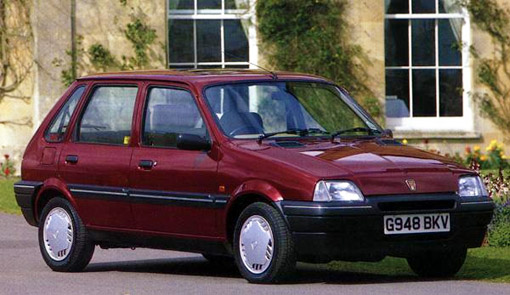 '80: Austin Metro debut; ’88: 5-door variant; ’88: renamed Rover Metro; V 90: modernization, as Rover Series 100 or Metro; '94: change of appearance, diesel from the PSA concern; '97: end of production.
'80: Austin Metro debut; ’88: 5-door variant; ’88: renamed Rover Metro; V 90: modernization, as Rover Series 100 or Metro; '94: change of appearance, diesel from the PSA concern; '97: end of production.
► Technical data
Chassis: Hatchback: 3- and 5-door.; dim. 3521/1550/1377 mm, great. trunk 230/960 l, on mass. from 810 kg, order. from 400 kg, also convertible.
Motors: gasoline, 4-cyl., carburetor or single-p injection.: 1.1/60 KM; 1.4/75; 1.4 (single injection.) 16V/ 90-95 KM, 1.4 16V (multi-p injection.)/103 KM; diesel 1.5/57 KM.
Chassis: front-wheel drive, trunk 4-, 5-run. manual; independent suspension front and rear, hydropneumatic elements.
► Faults
• emergency timing system
• cracks and leaks in the air suspension parts
• corrosion of body elements (older cars)
• electrical system failures
Parts prices in PLN
headlight 548
front fender 800
complete clutch 1085
brake pads (front) 282
windshield of the front door 553
timing drive 318
Rover 111 1.1, 1998 r.
► Summary
Series models 100 had at the beginning of the years 80. replace Mini. However, the plan failed.. Rover 100 is a car with an average body beauty, but spacious interior, decent equipment and with economical engines. This is probably the smallest vehicle with hydropneumatic suspension.
Comfortable, spacious Complex chassis Outdated silhouette





